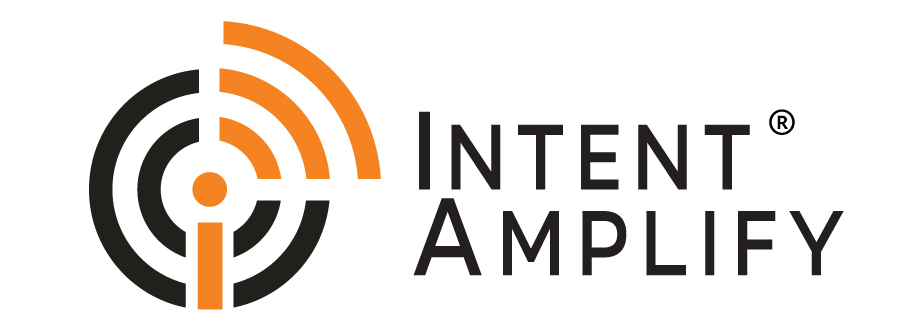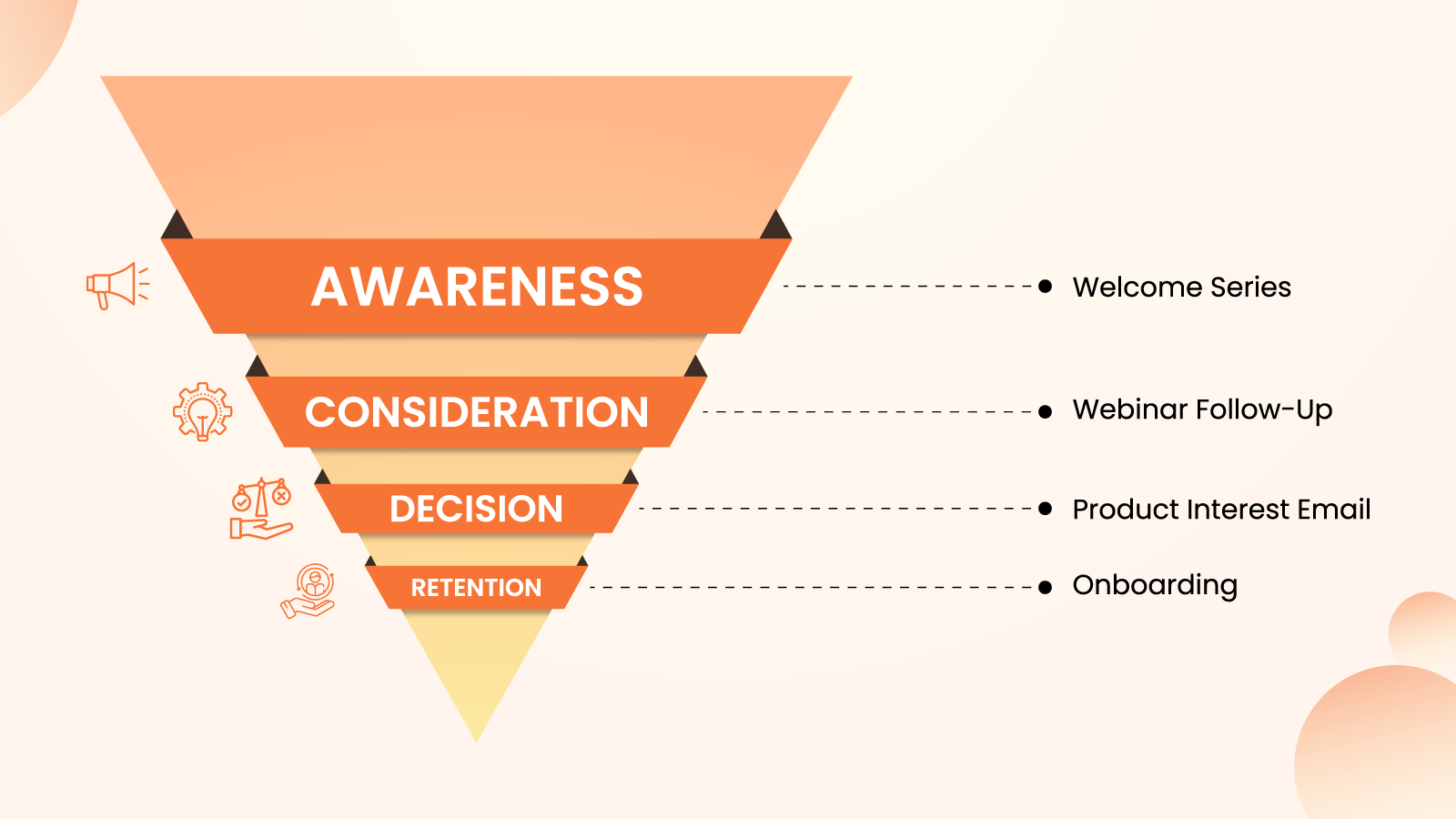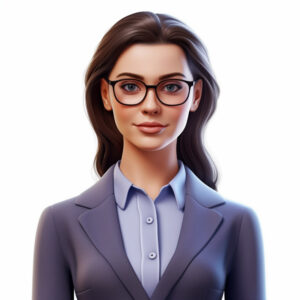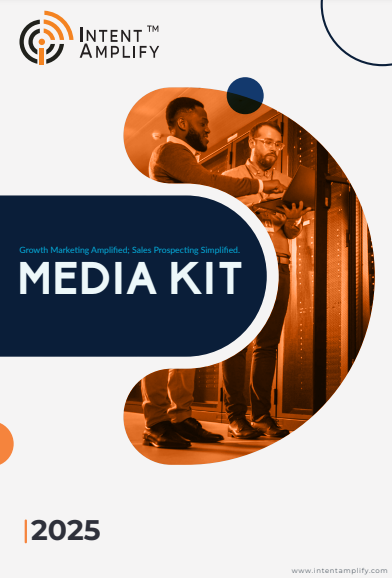
B2B Email Personalization Strategies That Actually Convert in 2025
- Last updated on: November 1, 2023
In an age of content overload and suffocating communication, the simple act of getting a prospect to open your email, let alone engage with it, is a major accomplishment. For B2B marketers, the actual competitive edge in 2025 is not the number of emails you send but how personalized those messages read. And that’s where B2B email personalization enters the scene as a game-changer.
Today’s enterprise buyers are sophisticated. They expect relevance, timeliness, and value in every interaction. If your email lands in their inbox with a generic pitch, you’re already forgotten. But if your message speaks directly to their role, pain points, and priorities? You’ve got their attention and their trust.
This article explores the real strategies driving email personalization success in 2025, backed by examples, analytics, and the latest industry shifts.
Why Email Personalization Succeeds in B2B
Let’s start with the obvious that is, personalized email succeeds. According to Campaign Monitor, emails with custom subject lines have 26% higher open rates. But it’s not just about opens Experian reports that personalized emails drive 6x higher transaction rates. In B2B brands, where the sales process is complex and time-consuming, these statistics have a tangible effect on pipeline progression and revenue.
When executed well, personalization is something more than a boost in engagement; it’s a strategic differentiator. It allows your emails to cut through inbox noise, align messaging with the buyer’s specific intent, create instant credibility and trust, and ultimately simplify the decision-making process. In short, personalization makes your email marketing go from background noise to a conversation that delivers real value.
Process of Email Personalization
Segmenting Your Email List for Relevance
Effective personalization starts with segmentation. Your leads are not all in the same stage of purchase, nor do they share the same pain points. By segmenting your audience based on firmographics, behavior, or engagement, you can message that truly resonates. Segmented and targeted email campaigns can drive up to a 760% increase in revenue.
To exemplify:
SaaS buyers in the buying phase would be more likely to engage with product comparison guides.
C-level executives are likely to seek strategic impact and ROI data.
HRTech users will be more active in dealing with use cases and compliance insights.
Behavioral segmentation, following email interaction or site activity, also sets warm leads and nurtures cold ones with respective touchpoints.
Personalized Subject Lines That Get Opened
Your subject line is your first impression, and it’d better make the good one. Personalizing based on the recipient’s company name, pain point, or behavioral insight significantly enhances performance.
Instead of:
“Our Newest Solutions Are Now Live”
Try:
“[FirstName], automate hiring at [Company]”
This type shows intent and relevance, immediately critical to B2B buyers with multiple vendors in consideration.
Content Personalization Beyond the First Name
It’s not personalization to place someone’s name in a salutation; it’s polite. Authentic personalization is more. Start by speaking to the reader’s industry and providing information relevant to their arena. Address specific pain points using behavior data or intent indicators, and back your message with proof like case studies or success testimonials. For instance, if you are emailing a cybersecurity firm, outline how you cut onboarding time by 40% for a like business through automated compliance procedures. That proves you understand them and are not making a blanket pitch. You are establishing yourself as a problem-solving partner, not another vendor.
Dynamic Content and Merge Tags in Action
Dynamic content allows your emails to modify in real-time based on who’s reading them. Using software such as HubSpot, Marketo, or Salesforce, you can personalize items such as headers based on industry, images based on user role, and calls to action based on the buyer’s stage. Merge tags extend this by inserting specific data such as job title, company name, or location into the subject line or message. It sounds like an example when “As a VP of Engineering at TechCore, you might be going through performance metrics at scale” is extremely relevant and personalized. It makes a bulk email one-on-one, making your message more powerful and interesting.
Triggered Email Sequences for Timely Outreach
Automated email chains based on real-time behavior are now the standard of B2B nurture programs. These chains align content delivery with where your buyer is in their process without you having to lift a finger after setup.
Good trigger-based chains are:
1. Welcome Series: Make a Strong First Impression
A welcome series is often the initial branded experience your new subscriber has. It’s not thanking them, it’s your chance to add brand voice, highlight core offers, and push the recipient to the next step. By offering upfront value through educating content or wins, you’re setting the groundwork for a great, long-lasting relationship. If a welcome series is executed well, it establishes trust, increases engagement, and puts the tone for what is to come.
2. Event Follow-Ups: Take It Further
Once a lead has visited a webinar, trade show, or virtual event, follow-up is essential within a timely window. Triggered emails can send important takeaways, presentation deck access, or further insights back to your audience reinforcing your expertise. This keeps your brand front-of-mind and the content in front of them, while fresh and timely. Adding a specific CTA, i.e., scheduling a consultation or downloading associated assets, can turn passive interest into an active sales funnel.
3. Lead Magnet Follow-Ups: Keep the Value Path Going
When someone downloads a whitepaper, checklist, or guide, they’re expressing interest in a specific topic. Triggering a sequence that builds on that topic shows you’re paying attention and committed to helping. For instance, if a prospect downloads a “Cybersecurity ROI Checklist,” follow-up emails could include a customer success story, an ROI calculator, or an invite to a security-focused webinar. This creates a natural content progression that nurtures the lead while reinforcing relevance.
4. Reactivation Emails: Re-Engage Cold Prospects
You have silent leads after a while, but you’re not necessarily lost. Reactivation sequences are designed to reactivate dormant contacts by sending them specific updates, new offers, or product or service changes. A great reactivation email can feature a recent case study, a product feature your lead previously expressed interest in, or an end-of-week deal. These remind the inactive leads that you’re still a valuable partner to be considered.
Example: If a lead clicks on “cloud security checklist” but doesn’t book a call, a triggered mail can come back with a whitepaper and subtle CTA to speak to a security analyst.
A/B Testing to Drill Down What Works
Personalization of email doesn’t end when you launch your campaign. For the best performance, you need to test what is actually working, and that’s where A/B testing comes in. It’s a method of comparing two iterations of an email to see which one works better with your readers. You can experiment with changing the subject line in one version and see if it receives more opens than the other. For example, you can test whether a subject line that includes a job title like “Solutions for IT Directors” will work better than something else more generic.
You can also test different call-to-action (CTA) formats. You can have a large “Book a Demo” button on one version of your email and a plain text link on another. This shows you what kind of design is clicked more. Even the tone of your email can affect it; some groups react better to a professional tone, while others will react better to a friendly tone. Last but not least, there is design to consider. You can play around with the way your email looks on mobile and desktop and tailor the design so that it looks great everywhere.
The key is to test one thing at a time, track what the effect is, and keep refining based on what does best. A/B testing helps you make more intelligent decisions, so each email gets better than the last.
Powering Personalization with Data and AI
In 2025, the power behind effective B2B email personalization is data, and AI is becoming wiser about it. Today’s marketers are using AI technology to track buyer intent in real-time, relying on tools like Bombora or G2 to know what prospects are browsing or comparing. This allows you to personalize messages based on what a lead is actually interested in, not what their job title is.
When you blend your email platform with your CRM, you are also able to automate messages on the basis of past conversations, stages of the sales process, or past engagement with content. AI pushes this one step further by analyzing behavior within your market and suggesting what type of content each group will engage with. It can even generate ideal subject lines and determine ideal send times for the highest interaction.
This type of intelligence works especially well in Account-Based Marketing (ABM). Here it requires very personalized and relevant communication to penetrate enterprise accounts. Equipped with the proper data and AI capabilities, personalization is a strategy more than it’s a tactic; it’s a differentiator.
FAQs
Q1. What is B2B email personalization?
It’s the process of personalizing emails at audience segments, behaviors, and data to create more relevant and engaging experiences for business buyers.
Q2. How does personalization in email increase engagement?
Personalized emails show prospects that you understand their needs, increasing open rates, click-through rates, and ultimately conversions.
Q3. What are some examples of B2B email personalization?
Using the recipient’s job title, industry pain points, or tapping into their most recent activity on your site are good personalization practices.
Q4. How do I start to implement email personalization?
Begin by dividing your list, combining CRM data, and leveraging capabilities like dynamic content blocks and merge tags. Test frequently to achieve maximum effectiveness.
Q5. Is B2B email AI personalization?
Yes, AI facilitates predicting best content, segmenting users on behavior, and even generating top-performing subject lines at runtime.





